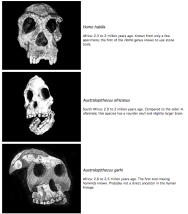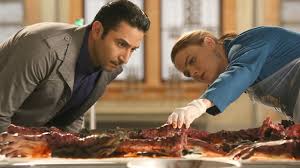I graduated with a Bachelor of Science in Bioanthropology. Bioanthropology is a subspeciality in the Anthropology field described as the “scientific discipline concerned with the biological and behavioral aspects of human beings, their related non-human primates and their extinct hominin ancestors” according to the googz and probably my undergrad school as well.

I chose that major mostly because my sister had the same major – at a different school, with a different specialty (hers was Archaeology; yeah we are nerds). And partly because I grew up not understanding people in general. I had no idea why they behaved the way they did, and why they acted the way they did. I hoped that by studying the past, it would give me an inkling as to how to understand and approach people. Mind you, I grew up very sheltered (of my own choosing), buried deep in books and television and was never good at socializing. One fascinating thing about Anthropology is that it is all it’s cracked up to be (yes, it gets exciting sometimes): it is the study of human beings. Labs consisted of looking at bones, for hours on end; and not just human bones but all types of bones stemming from Australopithecus (shoutout to Lucy) to Homo neanderthalensis (which by the way, is pronouned neanderTal as opposed to neanderTHAL – yes hollywood, you are wrong).







I loved every single part of this portion of studying. I was immersed in habilis, erectus, ergaster and my favourite (I can’t remember why..) rudolfensis. If you’d like a crash course, either click on the photos or head to https://www.exploratorium.edu/evidence/lowbandwidth/INT_hominid_timeline.html where the photos are from.
Along with studying the objective analyses – their stature, characteristics, possible diet and level of activity, level of bipedalism and their level of reproduction and travels, we had to study every facet of humans. That included Cultural Anthropology, Archaeology, and the dreaded Linguistics. They were all exciting and interesting in their own ways. I had the most trouble with the cultural aspect and this area probably taught me a lot more than I wanted to learn. Which is most likely the point of this story.
I walked in to my Introduction to Cultural Anthropology class back in 2008 and waited there along with roughly around 100 other students for what seemed like 15 minutes waiting for the professor. People started to talk to their neighbours, everyone would look as soon as someone walked in wondering if that’s the professor. When everyone seemed to have settled in and no one else was coming in, this lady from the back stands up, walks to the front of the class and introduces herself as the professor and relates how she had been sitting there in the back for the past 15 minutes. She then related everything that everyone did – sit by the end of the row, up at the front, in the back.. started conversations with others, put their head down, looked around – all these things that we do that can be explained by how we were raised and what culture we belonged to, and how we exercised our beliefs. This. This is when I knew I was in waaaaay over my head.

Throughout the course of my undergraduate studies, I would do really well on my physical anthropology classes, archaeology, even my Forensic Anthropology class (I wanted to be a Forensic Anthropologist) and would struggle with my Cultural Anthropology class. I went to class, listen and absorb everything the professor would teach and be amazed at the opinions of people in my classes. They were older and had more experience. Every time midterms and finals would roll around and we had to sit there and write two-page essays on Cultural Relativism and how specific native tribes in different parts of world expressed their beliefs. And some of them, us Westerners would think, are bizarre, absurd and downright insane. But that was it. The Magic. The magic that is people, and what separates us from “apes” (not just our opposable thumbs) is our ability to understand the world. And that understanding is so inconceivable unique that no two people ever see the world in the exact same way.
I didn’t realize until today, that all that education.. no matter how extensive (some may argue that it wasn’t), will never compare to experiencing people first hand. They talk about this at school too; that there are two types of anthropologists – ones that stay in the library and read other people’s dissertations and ones that go out into the world, join tribes and learn their ways of living and write about it. I was always scared of doing the latter, until I moved away and joined a different tribe. Here, they speak different, act different, live, breathe, and love different. It is an amazing tribe full of passion and amidst all the challenges and hurdles I have to go through learning about people and how to heal them as a Chiropractor, I will never lose this part of me. The “anthropologist” (yikes), always learning and studying people; trying to understand what brought them here and where they’re going.

I brisked through your blog. It is a long post. Being an engineer myself I really get interested in anything to do with science. Would love to read a bit more about you and your studies. Although would suggest having a shorter blogs to allow people like me to digest the information
LikeLiked by 1 person